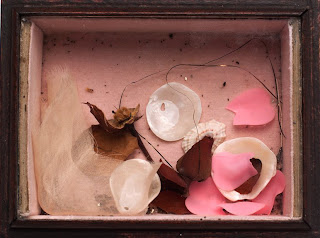To create this poster, I have used two of my personal
photographs. As a base, I took the one of the flower, rotated it, and turned into black and
white to reflect on the photos used in Constructivist posters. Afterwards,
using my inspiration of Lyonel Feininger, I took a fragment from the portrait photo (the smile) and applied it to the first. The application refers
to Gustav Klutsis’s photomontage idea, as I pasted the smile into the flower’s
contour to create somewhat of a collage.
Moreover, to incorporate a Bauhaus feel to the poster, I
used their common colors of red and grayscale tones as well as one of their
basic shapes – the rectangle. These were made with the selection tool in
Photoshop. Also touching on the Bauhaus style, the text made in Illustrator has the flipped aspect, to make the text element not obviously
legible.
From a symbolic approach, the poster is made to mark the end
of the protests. Therefore, the flower is placed there as a sign of peace,
whereas the smile is a symbol of happiness due to the fact that students have
come to a positive result.
The inital sketch for the design idea:
















